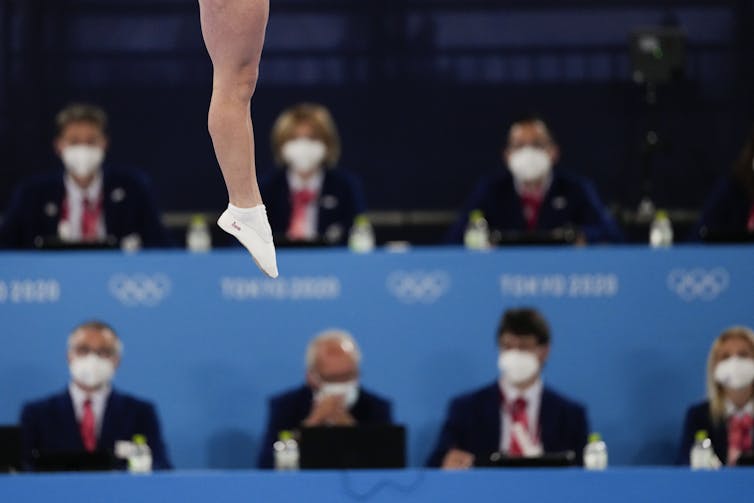
There has been a recent outpouring of calls to make sport safer. Athletes are writing testimonials and letters across many sports over allegations of abuse, maltreatment and harm.
The most recent development comes from the gymnastics world where 70 former gymnasts penned a letter to Sport Canada calling for an end to the toxic culture in that sport.
Read more: Protecting young athletes from abusive coaches – let's get it right
While gymnastics has been in the news for years, these recent developments seemed to strike a chord across Canadian sport. The calls for making sport a safer, more inclusive and welcoming space are not new, but they seem to be getting louder with too little action being taken by the sport system.
As a sports scholar, I find myself in an interesting position. My early foray into research drew upon my love of gymnastics. My personal experience as an athlete was exceptional — I grew up competing at an elite level, leading to university involvement. I had strong, caring coaches who always put my health and safety first. But when I was competing, I wasn’t naïve to the cultural problems that existed within the sport and would often see fellow competitors over-trained and living in fear.
Athletes need protection
After stepping away from competition, I got involved as a coach and a judge. Around the same time, I was completing my master’s degree. It was logical for me to focus my research on something I was passionate about, and my advisor was a critical sport scholar so I examined youth protection policy in sport, using a case of Gymnastics Canada.
I discovered the sport system was doing little to ensure young athletes received the necessary rights and protections from harm. At that time, I argued that sport needed to protect young elite athletes using mechanisms that had been adopted elsewhere, such as those for young actors.
My research challenged my thinking about a sport that was my passion. I presented my research to Sport Canada and Gymnastics Canada, but nothing ever came of it. My work was dismissed.
The process was emotionally taxing, so I turned to other academic pursuits and continued my involvement in coaching, becoming a national level gymnastics judge.

During my 14 years as a gymnastics judge, I witnessed many disturbing things about the sport. I was often torn between my impartial role as a judge, and my feeling of moral responsibility to support the well-being of young athletes in the sport.
I felt complicit in the toxic sport culture and started to try and push for change — I even sent letters to governing bodies outlining concerns about the behaviours of coaches toward young athletes. Despite the emergence of safe sport guidelines, the toxic culture remained.
I felt powerless and eventually left sport because I couldn’t bear witness to an institution that celebrates pushing youth to their limits and coaching behaviours that reinforce dominance, often in the form of adult men wielding power over young girls.
As the mounting unrest in the sport community grows, I look back and feel guilty that I didn’t speak out more, that I didn’t work harder to have my voice heard, that I didn’t do more.
But what I now realize is that the institutional structures in sport, particularly in gymnastics, where young girls are the stars, silence dissenting voices. Obedience, tolerance and compliance are what is expected in this culture — which is why it has taken so long for these issues to come to light.
An athlete-centred approach

All sport organizations are now required to have safe sport policies, but as scholars have noted there remains a gap between the ideological realm of safe sport and a culture of silencing. The policies often do little to support athletes suffering from sport’s toxic culture — or change that culture.
As a sports scholar, I am now in a position of power and have the privilege and opportunity to support change. Moving towards a more athlete-centred approach to sport is one step in the right direction. But our funding models are fundamentally about medals and overall success, not on how well a sport performs in getting people moving or how culturally safe the sport actually is.
Safe sport policies and accountability are a start, but they are far from a much-needed cultural shift.
Laura Misener does not work for, consult, own shares in or receive funding from any company or organization that would benefit from this article, and has disclosed no relevant affiliations beyond their academic appointment.
This article was originally published on The Conversation. Read the original article.







